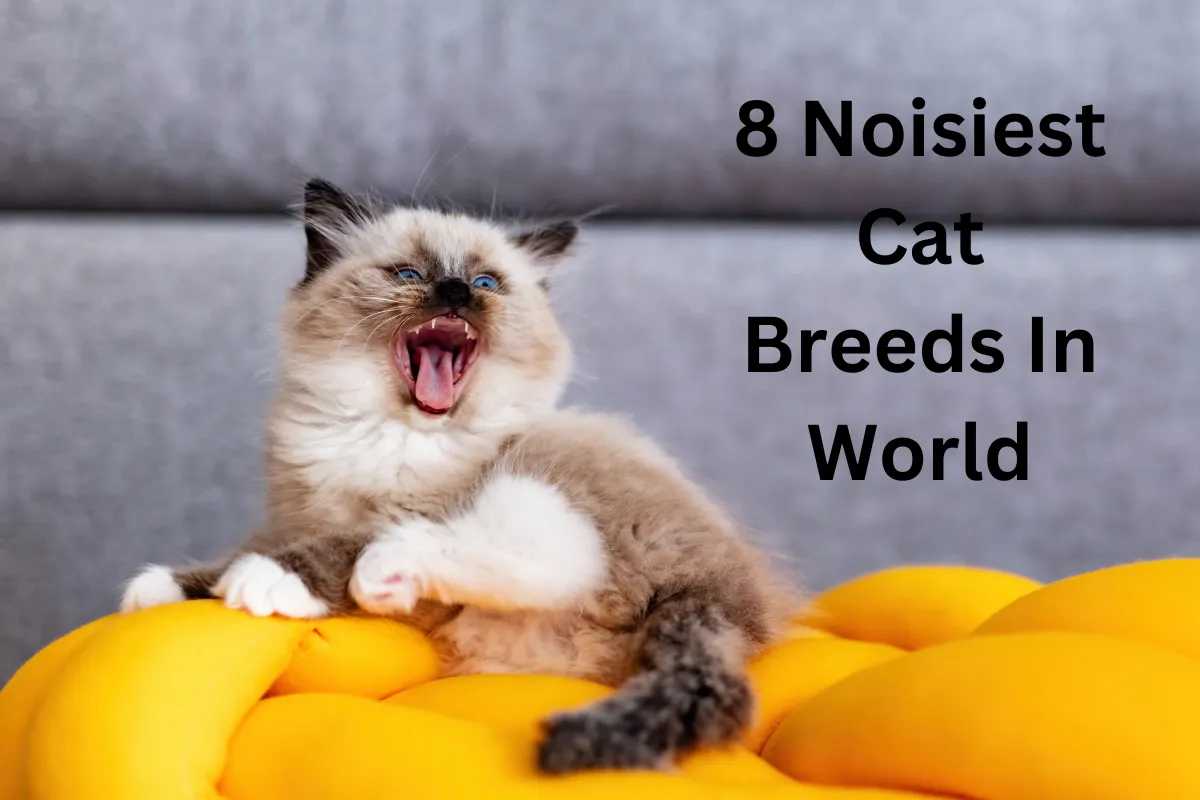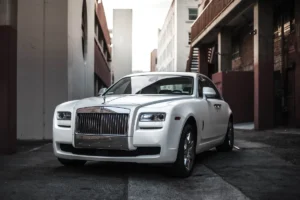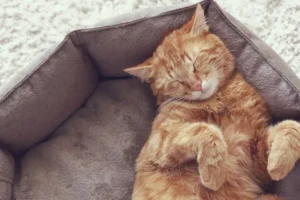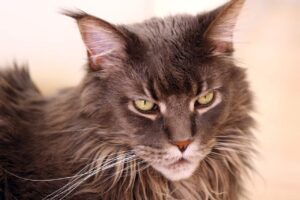Hey there, cat lovers!
Ever wondered which feline companions could give a symphony a run for its money?
Get ready to dive into the enchanting world of cat vocalizations as we unveil the 8 noisiest cat breeds that could turn your quiet home into a lively concert hall.
The Art of Cat Communication – Why Are Some Cats Louder?
Before we embark on our noisy journey, let’s unravel the art of cat communication.
Cats use vocalizations to express a range of emotions, from affection to annoyance.
While some cats are naturally quieter, others have mastered the fine art of making their voices heard.
So, why are some cats louder?
It’s a mix of genetics, personality, and the sheer joy of getting your attention.
Siamese Sensation – The Original Chatterbox
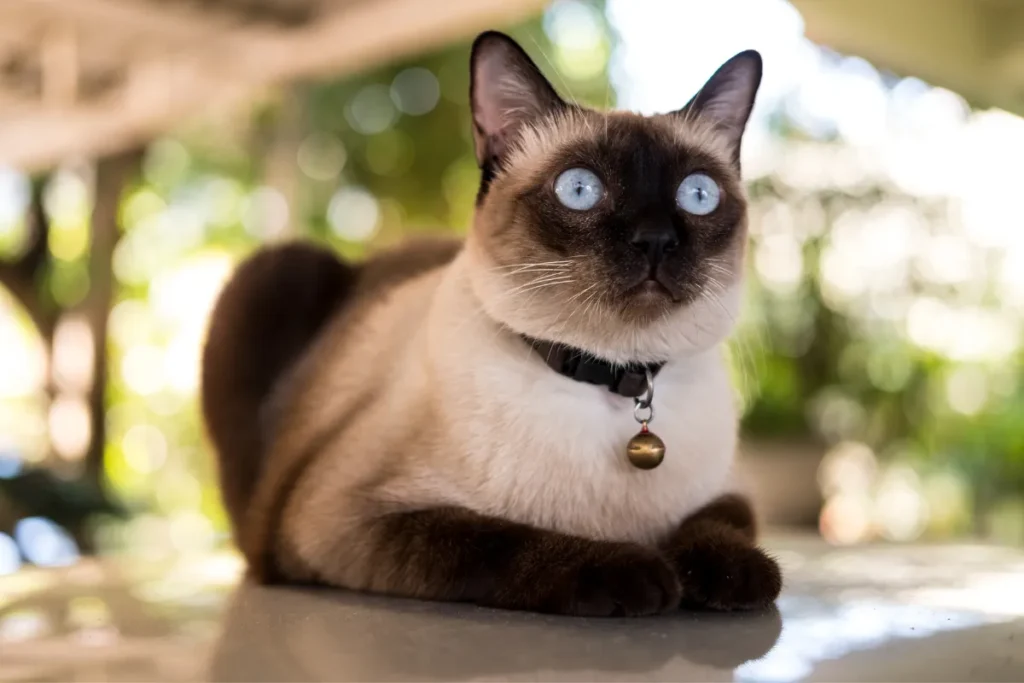
Meet the Siamese, the cat that wrote the book on vocal prowess.
Siamese cats are notorious for their chatty nature and unique vocalizations.
With a voice that can range from a soft murmur to a loud yowl, Siamese cats have a knack for keeping the conversation going, making them the original chatterboxes of the feline world.
Bengal Boisterousness – A Symphony of Sounds
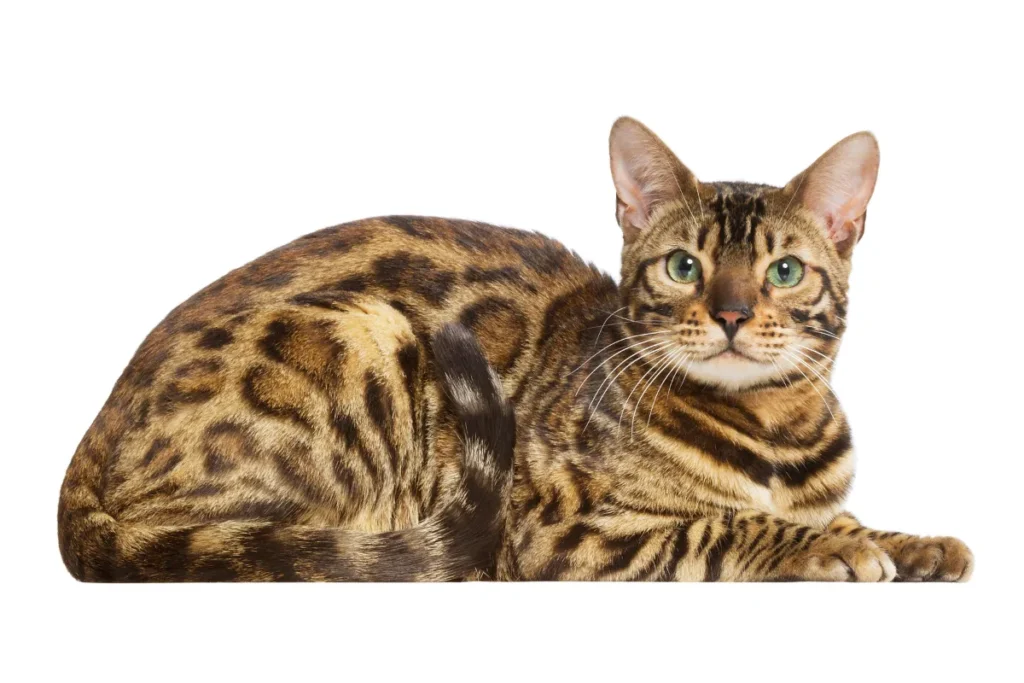
Bengal cats, known for their striking leopard-like appearance, are not just a treat for the eyes but also for the ears.
These energetic and playful felines express themselves with a variety of vocalizations.
From delightful chirps to demanding meows, Bengals can turn your living room into a vibrant symphony of sounds.
Maine Coon Melodies – Gentle Giants with a Big Voice
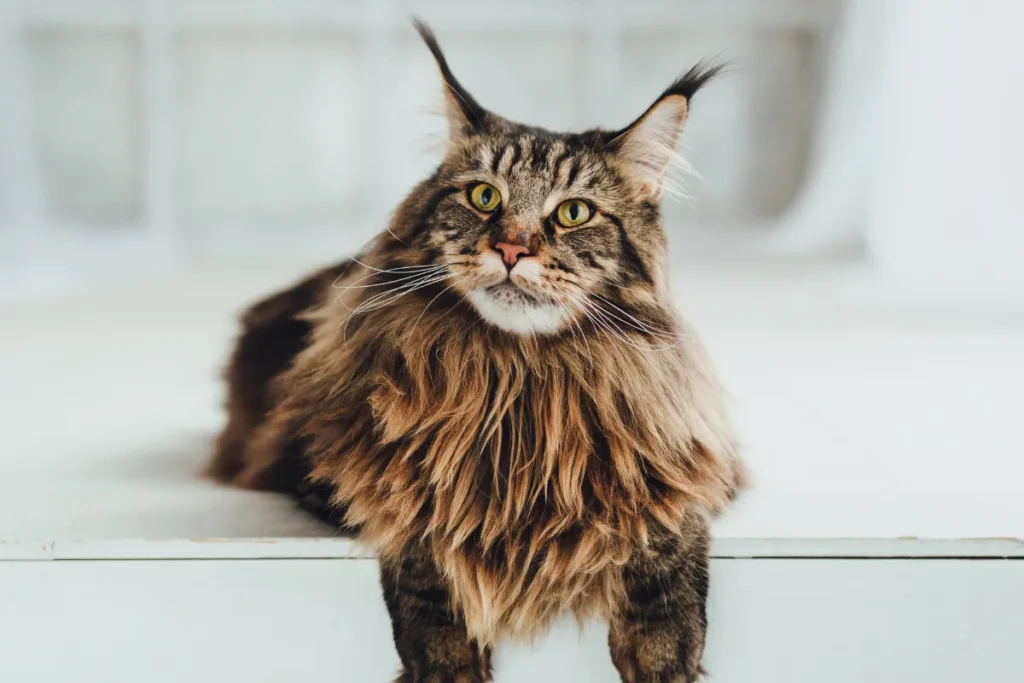
Don’t be fooled by their large and gentle demeanor; Maine Coon cats have a vocal range that matches their size.
These gentle giants are not afraid to use their deep and melodious voices to communicate.
Whether it’s a trill of excitement or a purr that echoes through the house, Maine Coons make sure their presence is known.
Oriental Opera – A Vocal Performance in Every Room
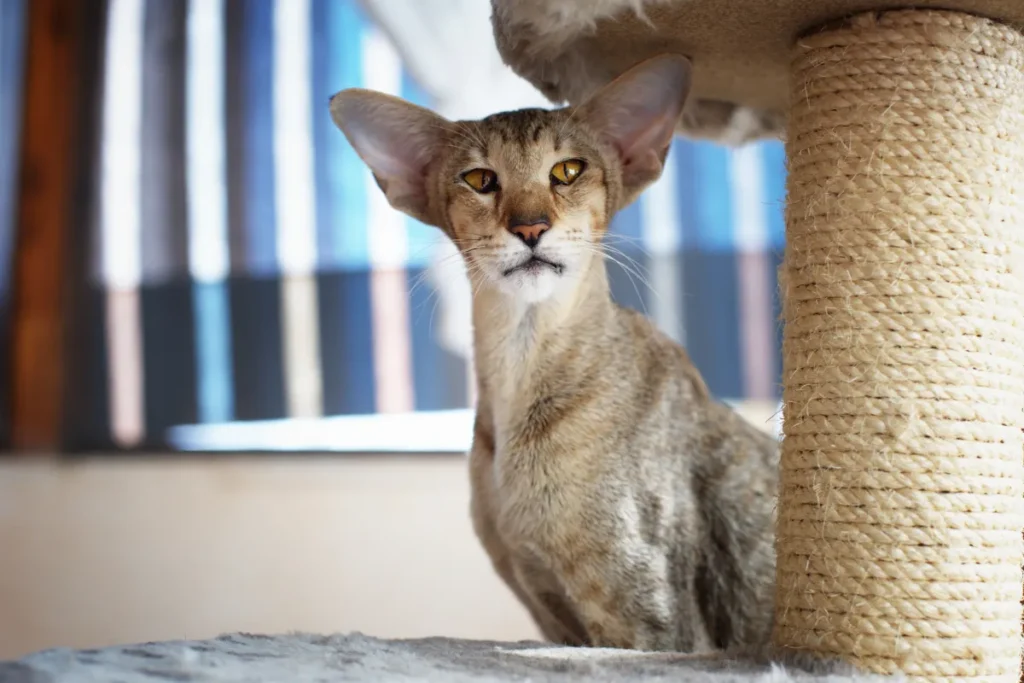
Oriental cat breeds, including the Oriental Shorthair and Oriental Longhair, are natural-born performers.
These cats are not shy about expressing their opinions on everything from mealtime to the weather.
With a penchant for loud meows and expressive vocalizations, Orientals turn everyday moments into a captivating opera.
Burmese Ballads – Sweet Serenades from a Velvet Voice
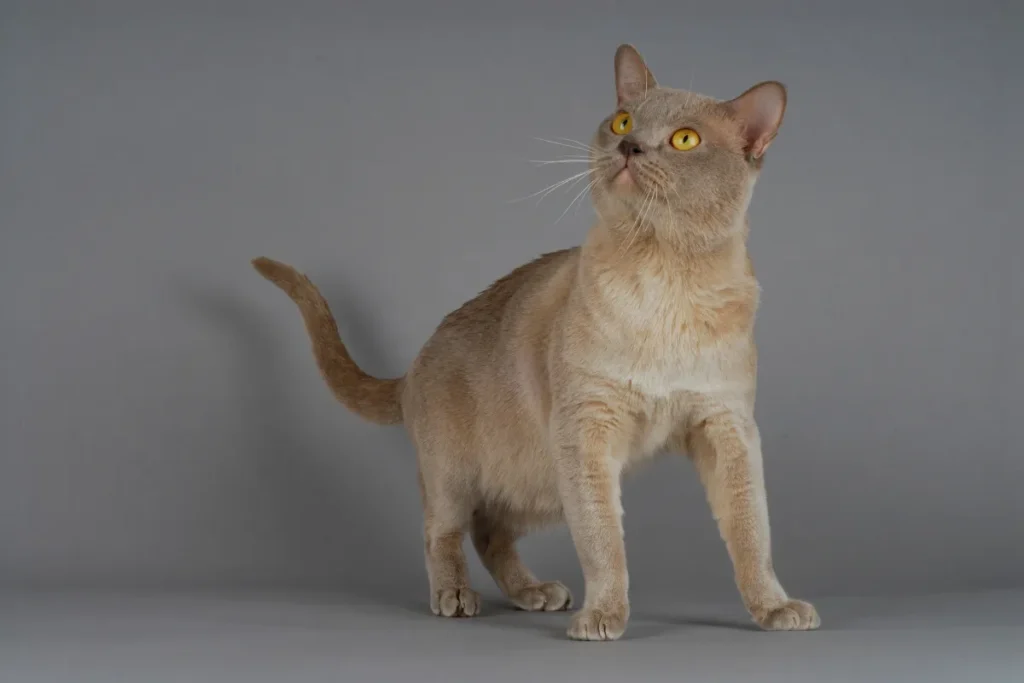
Burmese cats, with their sleek coats and soulful eyes, are masters of the sweet serenade.
These affectionate felines use their soft and velvety voices to convey their love and seek attention.
If you have a Burmese cat, you’re likely to be treated to a chorus of charming meows that add a touch of elegance to your daily routine.
Scottish Fold Squeaks – Endearing Sounds from Folded Ears
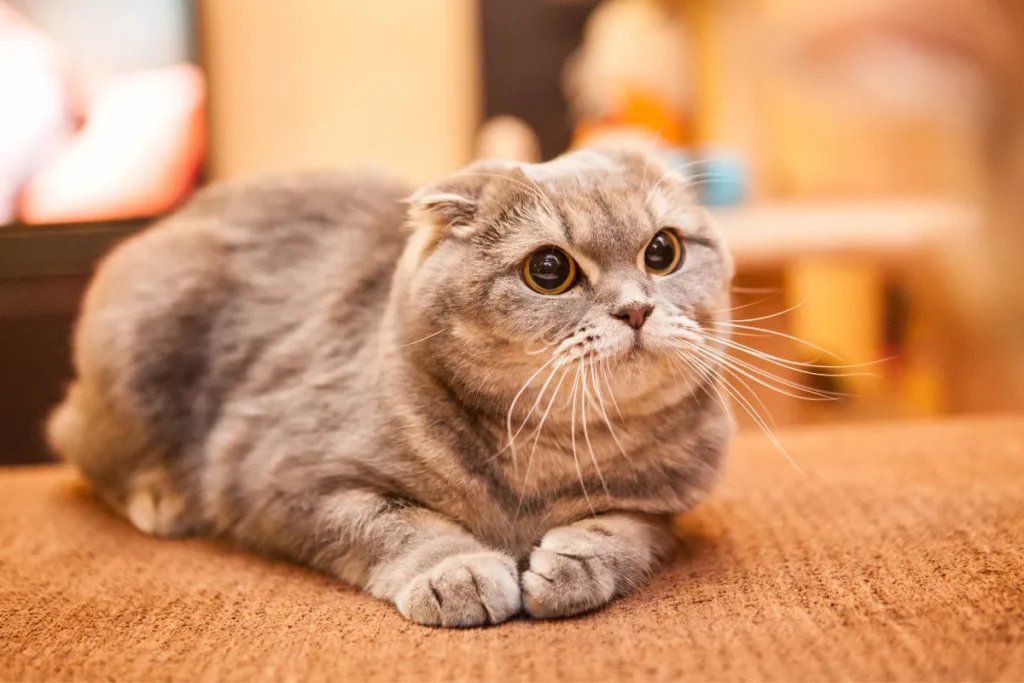
The Scottish Fold, known for its distinctive folded ears, brings a unique twist to the world of cat vocalizations.
While not the loudest on our list, Scottish Folds compensate with endearing squeaks and gentle chirps.
Their soft, kitten-like sounds make them irresistible, turning your home into a haven of adorable feline melodies.
Ragdoll Rhythms – A Symphony of Relaxed Tunes
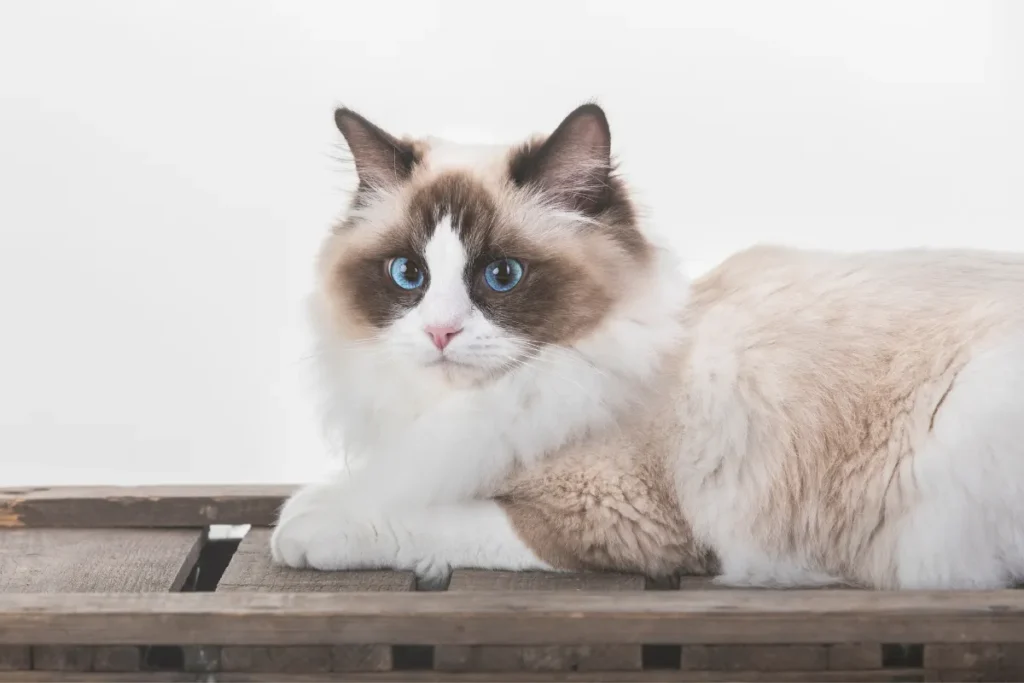
Ragdoll cats, famous for their relaxed and docile nature, have a vocal style that matches their easygoing personalities.
These gentle giants produce soft and rhythmic meows, creating a symphony of relaxed tunes.
Ragdolls are not the loudest, but their soothing vocalizations add a calming soundtrack to your day.
Abyssinian Aria – The Energetic Songstress
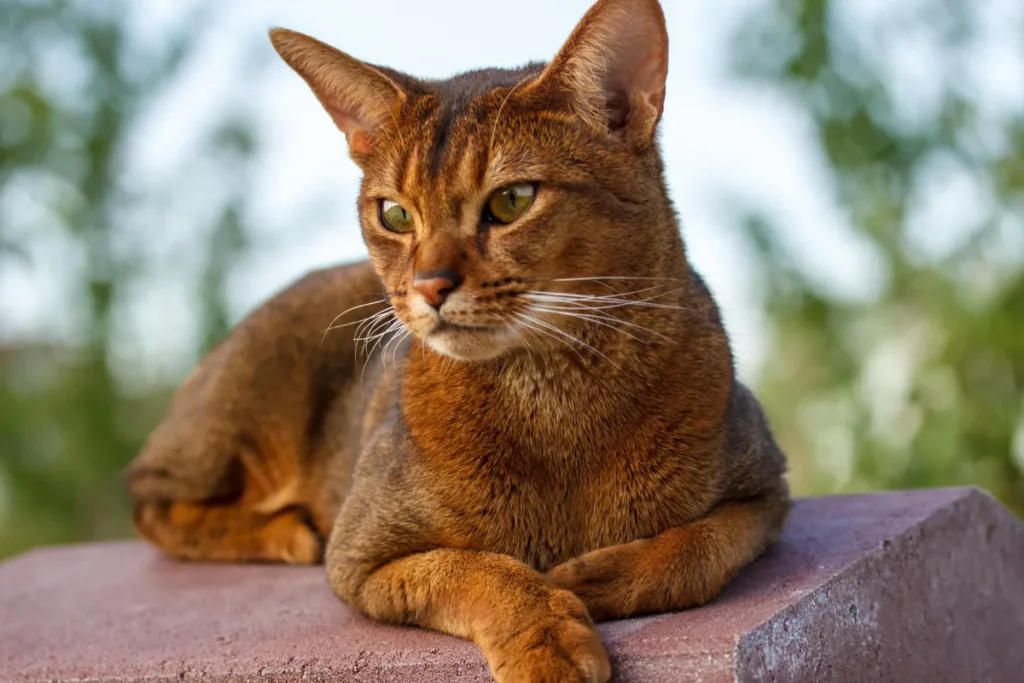
Abyssinians, with their playful and energetic disposition, bring a burst of energy to the world of cat vocalizations.
These curious cats are not afraid to express their enthusiasm with a series of trills, chirps, and delightful meows.
If you have an Abyssinian, get ready for a daily dose of feline exuberance.
The Soundtrack of Cat Ownership – Embracing the Noises
Owning a cat, especially one of the noisiest breeds, comes with a unique soundtrack.
From the Siamese serenades to the Bengal beats, each cat adds its own flavor to the symphony of sounds that fill your home.
Embracing the noises is not just about tolerating them; it’s about celebrating the vibrant communication between you and your feline friend.
Decoding Cat Sounds – What Is Your Cat Trying to Say?
Cat sounds are more than just random noise; they are a form of communication.
Decoding these sounds can help you understand your cat’s needs and emotions.
From the insistent meows of hunger to the content purring of satisfaction, each sound has a story to tell.
So, what is your cat trying to say?
Managing Cat Vocalizations – Tips for a Harmonious Home
Living with a noisy cat can be a joy, but it also comes with its challenges.
If you find yourself in need of a bit more quiet time, fear not!
We’ve got some tips for managing cat vocalizations and creating a harmonious home where you and your feline companion can coexist happily.
The Cat Choir – When Multiple Noisy Breeds Coexist
What happens when you have a household with multiple noisy cat breeds?
It’s a cat choir!
The interplay of different vocalizations adds a dynamic layer to your home’s soundtrack.
Each cat brings its unique voice to the choir, creating a delightful cacophony that reflects the diversity of feline expression.
Silence in the Cat Concert – Appreciating Quiet Moments
Amidst the meows, chirps, and trills, there are moments of silence in the cat concert.
Appreciating these quiet moments is essential for maintaining balance in your feline-filled home.
It’s in these hushed intervals that you can reflect on the beauty of your cat’s presence and the unique bond you share.
Conclusion:
As we wrap up our exploration of the 8 noisiest cat breeds in the world, one thing is clear: each cat brings its own melody to the symphony of life.
From the Siamese’s vocal theatrics to the Bengal’s boisterous beats, these feline companions enrich our homes with their expressive voices.
So, here’s to the noisiest cats, the cat choirs, and the harmonious cacophony that makes cat ownership an extraordinary experience.
FAQs:
Q1: Can cat vocalizations indicate health issues?
A1: Yes, changes in a cat’s vocalizations can sometimes signal underlying health issues. If you notice a sudden increase or decrease in your cat’s vocalizations, it’s advisable to consult with a veterinarian for a health check.
Q2: How can I manage excessive cat vocalizations?
A2: Managing excessive cat vocalizations involves understanding the underlying reasons, such as hunger, boredom, or attention-seeking behavior. Providing enriching activities, regular playtime, and ensuring your cat’s needs are met can help reduce excessive vocalizations.
Q3: Do all cats vocalize loudly?
A3: No, not all cats vocalize loudly. Each cat has its own personality, and some breeds or individual cats may be naturally quieter. The level of vocalization can also be influenced by factors such as age, health, and environment.
Q4: Can you train a cat to be quieter?
A4: While you can’t completely eliminate a cat’s natural vocalizations, you can train them to be quieter in certain situations. Positive reinforcement, rewarding quiet behavior, and providing alternatives for attention-seeking can be effective training methods.
Q5: Are there quiet cat breeds?
A5: Yes, some cat breeds are known for being quieter, such as the British Shorthair and the Persian. However, individual cats within any breed can vary in their vocalizations, so it’s essential to spend time with a cat before deciding to bring them home.
